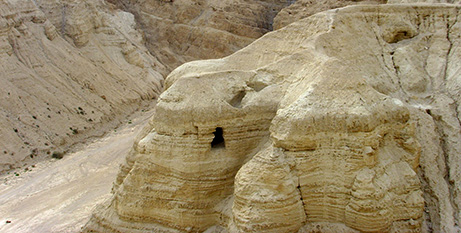
Researchers trained an artificial intelligence model on carbon-dated Dead Sea Scrolls to predict their age, and found several scrolls were older than previously thought. Source: ABC News.
The Dead Sea Scrolls are one of the most significant troves of religious manuscripts ever found, with many being the oldest surviving copies of biblical texts.
First found by a Bedouin shepherd in 1947, the hundreds of ancient scrolls excavated from the Qumran caves in the West Bank between 1946 and1956 have been a boon to those studying the history of Judaism and Christianity.
But while we know the scrolls are all between 2500 and 1800 years old, just a fraction have dates written on them indicating when they were first composed.
An international team of researchers has sought to fill some gaps in the timeline of the scrolls using a combination of artificial intelligence, carbon dating, and handwriting analysis.
In the journal PLOS One, they proposed new ages for more than 100 scroll fragments and found many to be older than previously thought.
Gareth Wearne, a researcher in biblical studies and the history of ancient Israel at Australian Catholic University, said the research could change our understanding of the history of the Dead Sea Scrolls.
In the new study, the team carbon dated 24 Dead Sea Scroll samples and fed digital images of the scrolls into a machine learning model – a type of AI – which was designed to analyse the handwriting in the scrolls.
They then had the AI predict the ages of 135 other scrolls, based on their handwriting and scripts.
One scroll, which contains a fragment from the book of Daniel, was carbon dated to between 230 and 160 BC – up to 100 years older than previous estimates.
This means it overlaps with when the text was believed to be written, based on historical events it refers to.
Another scroll, containing text from Ecclesiastes, was dated to the third century BC.
The text had previously thought to have been created roughly in the mid-second century BC based on how it aligned with the cultural movements of the era.
If the dating is correct, these two fragments would be the first-known examples of biblical texts from the time when the work was composed.
FULL STORY
Age of some Dead Sea Scrolls pushed back by new AI study (ABC News)






